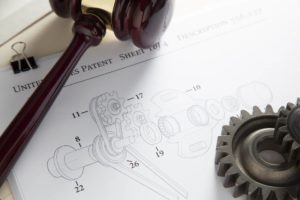
Polasek Law Firm (TPLF) has decades of experience representing patent owners in enforcing their patents against infringers and defending companies accused of patent infringement.
TPLF has experience in litigating patent infringement lawsuits involving a wide variety of technologies.
These areas include smartphones and software, base stations and other telecommunication equipment, caller identification, vision & facial recognition and monitoring systems, license plate recognition, vehicle collision warning, and avoidance systems, earth moving equipment, auto parts, music identification, computer accessories, and wireless navigation.
TPLF also has experience litigating patent cases involving mapping systems, advanced process control, chip fabrication, chemical compositions, cosmetic formulations, contact lens, boat design, catalysts, oil field equipment, tertiary oil recovery systems, offshore platforms, medical devices, pagers, laser levels, fasteners, “distance to the pin” determination on a golf course, and ski poles to name a few.
The Polasek Law Firm also represents clients on a contingency fee basis for certain cases. See the TPLF Contingency Fee Patent Litigation page for additional information.
What Constitutes Patent Infringement
Under 35 U.S.C. ?271, patent infringement occurs whenever someone without permission from the patent owner makes, uses, sells, offers to sell, or imports in the United States a patented invention during the term of the patent.
A person who engages in these activities commits a direct infringement, regardless of whether they knew that the patent existed or not.
By contrast, indirect infringement, whether induced or contributory, requires knowledge of the patent. Indirect infringement occurs when an individual or company induces or contributes to direct infringement.
Who Can Sue for Patent Infringement?
Only a person or entity with sufficient ownership rights to a patent can bring a lawsuit for infringement. Often this means the inventor listed on the patent or the assignee of the patent (which may or may not be identified on the face of the patent).
How Is Patent Infringement Established?
A claim for patent infringement requires the patent owner to prove three things:
- Ownership of a patent;
- Infringing conduct by another person or entity; and
- The infringing product or process meets all limitations of at least one independent claim of the patent either literally or under the doctrine of equivalents.
Each of these requirements may present issues for the patent owner or accused infringer to litigate depending on the facts of the matter. A patent’s claims define its scope.
To prove patent infringement, the patent owner must demonstrate that the limitations contained in at least one claim of the patent exist in the infringing device or process.
Challenges to a Patent’s Validity
One defense technique frequently used in patent infringement cases is to challenge the validity of the patent. In general, patentability is based on an invention’s usefulness, novelty, and non-obviousness.
The most common current challenges to a patent’s validity include:
- The subject matter of the patent was not eligible for patentability under 35 U.S.C. §101
- The claimed invention is anticipated under 35 U.S.C. §102
- The claimed invention is obvious under 35 U.S.C. §103
What Happens If Someone Infringes My Patent?
If someone infringes on your patent, you may be able to seek damages and in certain instances an injunction against further infringement.
Do You Need a Patent Litigation Attorney?
If you believe your patent is being infringed or if you have been sued for patent infringement, Polasek Law Firm can help.
TPLF provides experienced patent litigation services to clients nationwide with a client-focused, result-oriented approach to all of the cases the firm handles.
Contact Polasek Law Firm today through the online form, or give the firm a call at 832-485-3580 to schedule a free consultation.
